Browns  Browns Archive
Browns Archive  How We Got Here
How We Got Here
 Browns Archive
Browns Archive  How We Got Here
How We Got Here
Written by
Dave Kolonich
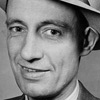 It's been a rough ten year stretch for Browns fans. One playoff appearance, no playoff wins. With major overhauls to the power structure and the philosophy of the team every 3 years. However, despite all of the coaching and management changes the team has suffered in the past 10 years, one constant remains as vital to the Browns' downfall. The simple answer to how the Browns have spiraled into the depths of the league's worst teams is this: Inept drafting. Dave Kolonich tells us how we got here in this excellent piece.
It's been a rough ten year stretch for Browns fans. One playoff appearance, no playoff wins. With major overhauls to the power structure and the philosophy of the team every 3 years. However, despite all of the coaching and management changes the team has suffered in the past 10 years, one constant remains as vital to the Browns' downfall. The simple answer to how the Browns have spiraled into the depths of the league's worst teams is this: Inept drafting. Dave Kolonich tells us how we got here in this excellent piece.
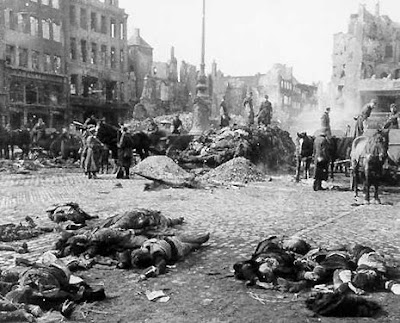
Three Chapters that Analyzes the Browns' Recent Draft History in an Attempt to Answer the Question:
How did the Browns fall so far?
CHAPTER ONE - 1999-2000
It's fascinating how different things are in Berea entering the NFL Draft compared to a year ago. At this time in 2008, the Browns had just signed Donte Stallworth to huge free agent contract, traded for both Shaun Rogers and Corey Williams and added what appeared to be quality depth in Rex Hadnot. The team was only one Derek Anderson meltdown removed from clinching a playoff spot and the overall roster looked strong, featuring several playmakers across the board. In terms of leadership, the organization looked healthy and for the first time since the Browns returned in 1999, projected a sense of stability. GM Phil Savage had upgraded the roster and coach Romeo Crennel finally seemed to have turned the corner as a head coach.
A year later, the team is in a near state of chaos. A roster that seemed playoff worthy has been exposed, leaving a generous amount of holes. Donte Stallworth is looking at jail time, Shaun Rogers is dreaming of a salary cap-less NFL, Corey Williams and Rex Hadnot are expensive roster filler and young playmakers such as Anderson, Edwards and Quinn have likely played their last down in Cleveland. Gone are Savage and Crennel and in their place are Eric Mangini and George Kokonis, who have free reign to cleanse the team yet again.
Considering the Browns were a favorite to advance to the Super Bowl in 2008, the question has to be asked: In one year's time, how does an NFL franchise unravel so quickly?
In Cleveland's case, the question requires a more complex answer, which involves an ill-prepared rush back to the league in 1999, followed by a series of coaches and management who have all successfully put their individual stamps on the team, but have not acheived the stability of consistent franchises. Of course, nearly all of these false starts have occurred under the passive watch of Randy Lerner, who inherited the franchise from his late father. Lerner is neither a football guy or a hands-on owner, yet has refused to address these issues during his tenure. This lack of a true leader anywhere in the organization is the main contributor to the Browns' failure to build a winner.
However, despite all of the coaching and management changes the team has suffered in the past 10 years, one constant remains as vital to the Browns' downfall. The simple answer to how the Browns have spiraled into the depths of the league's worst teams is this:
Inept drafting.
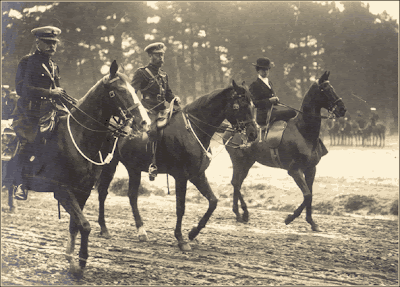
The best, most consistent teams in the league are the ones who annually have solid drafts. Obviously, consistency at the top management and coaching positions adds to success, in the cases of Pittsburgh, Baltimore, Philadelphia, San Diego and numerous others. However, even the worst teams in the league get it right occasionally. Consider Miami and Atlanta in 2008. Both of these teams were pathetic in 2007, yet added strong leadership and made smart draft picks in order to elevate to the league's second tier, behind the perennial powers. Another example could be the Arizona Cardinals, who may have the worst personnel history of any team in the league outside of Cincinnati. The Cardinals managed a couple of strong drafts, which helped to build the team into a surprise championship contender.
The current crisis with the Browns now can be magnified by the number of players who could be considered "untouchable." Strong franchises can boast at least 6-7 top indispensable players. What about the Browns? Is there anyone on the current roster the Browns simply cannot afford to lose? The only names I can think of are Joe Thomas and Shaun Rogers, simply because of the positions they play.
Thomas' durability at left tackle is more valuable than his actual skills. Although Thomas is merely solid, finding a true, consistent NFL left tackle is very difficult. Replacing one is nearly impossible. As for Shaun Rogers, his value has to be measured in terms of the Browns defensive scheme, as in many ways, he is the ideal NFL nose tackle. Losing Rogers would absolutely collapse the already shaky defense.
As for the rest of the roster, where is the talent? Despite all the coaching and philosophy changes, how did the Browns not manage to accumulate any talent over the past 10 years? To truly analyze the Browns current situation, we have to look at the past and point to where it all started to unravel.
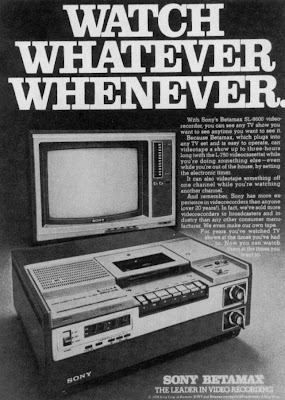
Epic Fail
I apologize in advance for using vulgar language, but in order to show how the Browns have fallen, one name has to be cited...
Dwight Clark.
The Drive, The Fumble, The Move, Spergon Wynn. All familiar phrases in the futile lore of Cleveland past. However, the Dwight Clark era has to be considered as the low point of the Browns existence.
Clark entered the 1999 draft with what appeared to be an endless array of picks, thanks to the expansion package given to the Browns upon their return. Using these picks, Clark selected the following players:
1-Tim Couch - QB
2-Kevin Johnson - WR
2-Rahim Abdullah - LB
3-Daylon McCutcheon - CB
4-Marquis Smith - S
4-Wali Rainer - ILB
5-Darren Chiaverini - WR
6-Marcus Spriggs - DL
6-Kendall Ogle - LB
6-James Dearth - TE
7-Madre Hill - RB
Also, the Browns traded picks to acquire QB Ty Detmer and FB Marc Edwards.
In 2000, Clark delivered this:
1-Courtney Brown - DE
2-Dennis Northcutt - WR
3-Travis Prentice - RB
3-JaJuan Dawson - WR
4-Lewis Sanders - CB
4-Aaron Shea - TE
5-Anthony Malbrough - CB
5-Lamar Chapman - CB
6-Spergon Wynn - QB
6-Brad Bedell - OL
7-Manuia Sevea - OL
7-Eric Chandler - DL
8-Rashidi Barnes - S
Looking at these drafts, which should be considered the most important in Browns history, one thing is glaringly obvious. Dwight Clark decided that the team did not need to build a core of linemen on either side of the ball. In fact, it took Clark a total of 21 draft picks over two years before he selected an offensive lineman. Notice how the Browns' offensive line has been a chronic weakness since. Also, the Browns defense has been one of the worst in the league at stopping the run for almost a decade.
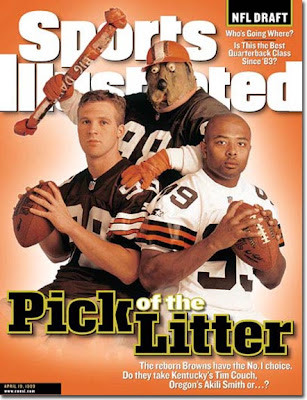
Instead, the team wagered on building the team around a weak-armed quarterback from an average SEC team without adding any protection for him. It's a wonder that Couch lasted as long as he did in the NFL behind the likes of these non-existent linemen. 2000 saw the arrival of Courtney Brown, who turned out to be the most gentle 300 lb. football player in the history of the world. Obviously, if a team misses on consecutive first round picks, trouble will soon follow. However, in the Browns case, the situation grew dire thanks to Clark's inane choices and refusal to draft the interior players that make teams successful.
The only picks of the original 24 that could be considered solid would be Kevin Johnson, who did produce in Cleveland, Daylon McCutcheon, who was a fairly consistent corner and Dennis Northcutt, who was a very good punt returner. As for the rest of the players, none with the exception of Wali Rainer, Lewis Sanders and Brad Bedell lasted longer than 2-3 years in the league. Another telling sign of Clark's futility is that Northcutt is the lone player remaining in the NFL today.
The major flaw in Clark's plan could be considered the result of a strange combination of styles between management and the coaching staff. Clark and Carmen Policy came from the San Francisco system, which emphasized an efficient West Coast style of offense. However, head coach Chris Palmer worked under the Parcells family tree of coaches in the NFL, specifically with Tom Coughlin, whose offenses have always featured more traditional running attacks.
The blending of styles seemed to create confusion on draft days, as the players picked had a wide variety of backgrounds. Adding to the mess was a defensive philosophy that echoed the Parcells/Belichick defenses, which was a departure from the systems in place in San Francisco in the 80's and 90's. Needless to say, the drafts were almost schizophrenic in nature and failed to produce any type of working system in Cleveland.
The result was 5 wins combined in 1999 and 2000, leaving Browns management no choice but to change gears and hire a new coach. So, by the time the team entered the Butch Davis era in 2001, the original drafts have given the new coach absolutely nothing to work with. Obviously, Davis sensed that the leadership was inept, and quickly reduced Clark's role in the organization. The hope entering 2001 for Browns fans was that Davis would finally begin to build the core of a winning team, something that Dwight Clark epically failed to do.
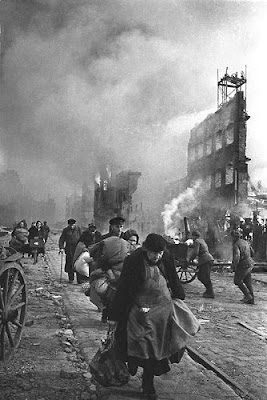
CHAPTER TWO - 2001-2005
After the debacle of the Dwight Clark years, Browns management reached into the college depths and grabbed University of Miami head coach Butch Davis. Davis was coming off a successful college run and was groomed in the championship Dallas system run by Jimmy Johnson. Davis' pedigree, youth and attitude offered the Browns a fiery contrast to the mild-mannered Chris Palmer.
Davis wasted little time in shaping the Browns into the mold created by the Cowboys in the 1990's. Considering Davis had little to work with on the roster, any personnel changes were greatly anticipated. After sweeping out Dwight Clark and eventually Carmen Policy, Davis became the team's defacto GM, as well as its coach. The power structure in Cleveland clearly centered around Davis and any success incurred was exclusively the result of Davis' hand.
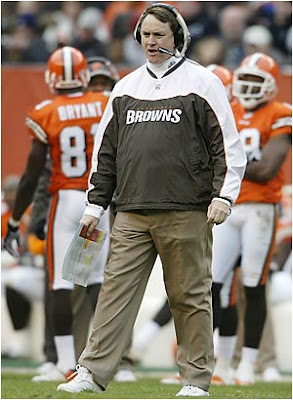
However, what followed was a mixed bag, as Davis clearly improved the team's talent level, culminating in a 2002 playoff appearance. But then Davis started to miss badly in the draft, which resulted in the team bottoming out in 2004, leaving the Browns once again searching for new leadership.
2001:
Gerard Warren - DL
Quincy Morgan - WR
James Jackson - RB
Anthony Henry - CB
Jeremiah Pharms - LB
Michael Jameson - DB
Paul Zukauskas - OL
Andre King - WR
2002:
William Green - RB
Andre Davis - WR
Melvin Fowler - OL
Kevin Bentley - LB
Ben Taylor - LB
Darnell Sanders - TE
Andra Davis - LB
Joaquin Gonzalez - OL
2003:
Jeff Faine - C
Chaun Thompson - LB
Chris Crocker - DB
Lee Suggs - RB
Ryan Pontbriand - LS
Michael Lehan - DB
Antonio Garay - DL
2004:
Kellen Winslow - TE
Sean Jones - DB
Luke McCown - QB
Amon Gordon - DL
Kirk Chambers - OL
Adimchinobe Echemandu - RB
East Coast Bias
Looking at Davis' drafts is interesting, as he certainly drafted some talent, but neither developed a solid roster core or brought the team any special, game-changing players. Davis' best quality as a coach was his brash approach with his players, as admittedly, Davis' teams always played hard for him. However, this intangible did not translate well in Davis' front office decisions, as he often refused to allow outside scouting to influence his decision-making. The greatest example of Davis' hubris has to be the drafting of Gerard Warren in 2001.
Reports have surfaced over the years that the Browns were ready to select Richard Seymour with their first round pick in 2001. Legend has it that Davis overruled Browns' management the night before the draft and insisted the team take Warren instead. The rest is history, as Seymour has been a vital part of a Patriots defense that has won three Super Bowls, while Warren has noisily bounced around the AFC.
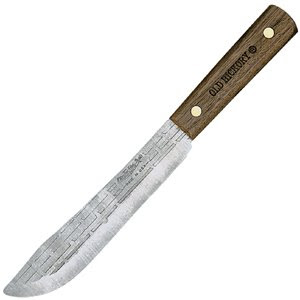
After the Browns missed with Tim Couch and Courtney Brown (although at the time, the team did not fully realize this), the selection of Warren further sunk the franchise, as none of their three highest draft picks became impact players. Davis' second draft produced the mercurial William Green, who after a slow start to his rookie season, came on strong during the Browns' 2002 playoff push. Green was a physically tough runner who had some breakaway speed. Considering the Browns anemic offensive line in 2002, Green's production had fans hopeful that the team had finally found a star. However, Green's off the field troubles caught up to him, as a substance suspension and a domestic dispute (in which Green claimed to have fallen on a knife), essentially derailed his career.
Jeff Faine and Kellen Winslow followed in Davis' final years in Cleveland. Faine was a bit small, but his selection at least signaled that the Browns had finally realized that their offensive line needed a serious upgrade. Faine lasted a few years in Cleveland, before being traded upon the arrival of LeCharles Bentley. If anything, Faine has been a solid, if unspectacular pro. As for Winslow, Davis gave up a lot to get him, but didn't last long enough to see the results of his work. Winslow was injured early in 2004, which of course was the first of several injuries that have come to slow K2 down throughout his career.
As for the rest of Davis' drafts, on paper there are several players who have had productive NFL careers. Unfortunately, most of these players have not contributed in Cleveland. Anthony Henry has been consistent in Dallas, Andre Davis found a home with Houston, and Melvin Fowler, Kevin Bentley, Chris Crocker and Sean Jones have all been solid pros. As for the Browns, Andra Davis was a very good 5th round choice, as he started in Cleveland for 6 seasons, while Ryan Pontbriand is becoming a perennial Pro Bowl long-snapper.
Entering the NFL from college, Davis seemed to have an edge in the personnel department as he scouted several future NFL draft picks while at Miami. However, Davis showed a limited perspective when it came to drafting, as he mostly targeted ACC or East Coast college talent. Looking at his drafts, Davis reached for several ex-Miami players, including Jackson, King, Gonzalez and Winslow. All of his first round picks came from no farther West than Indiana and the pivotal 2002 draft seemed almost entirely centered on the ACC.
The other flaw in Davis' four Cleveland drafts was following in Dwight Clark's refusal to draft any offensive linemen. Davis' highest lineman pick came in 2003 with the selection of Faine. Considering the team's lack of quality linemen, which greatly affected both the running game and the health of franchise quarterback Tim Couch, this was inexcusable.
On the defensive side of the ball, only Warren and Amon Gordon were legitimate attempts at improvement. Davis somewhat continued the legacy left by Dwight Clark, as he attempted to mold the team in the image of 1990's Cowboys, complete with disruptive linemen flanked by fast linebackers. Like Clark before him, Davis attempted to draft all the "outside" players, as evidenced by the numerous linebackers and defensive backs selected. However, Davis refused to address the gaping needs along the D-line, which is very comparable to Clark's strategy of choosing skill position players over offensive linemen.
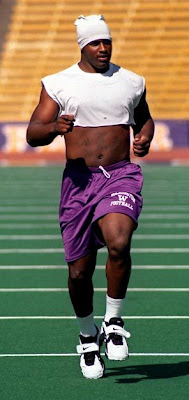
Another flaw in Davis' strategy was his poor judgment in terms of player character. While at Miami, Davis could get away with occasionally missing on a troublemaker or a project player, thanks to the vast roster depth at big-time college programs. However, in Cleveland, Davis' misses instantly affected the team and began to add up.
Warren was the first example of Davis' poor eye for character, as the rookie's propensity for talking about beheading quarterbacks and carrying unlicensed firearms got him into trouble with the league office. William Green's rough background was well-documented entering the league and manifested itself quickly. Quincy Morgan's ego preceded his hands and James Jackson was never happy about anything. Of course, Jeremiah Pharms was sentenced to a prison term before he could even put on a Browns uniform. Other players were drafted solely on unrealistic potential, such as Chaun Thompson, Lee Suggs and Luke McCown. In college, Davis could get away with these types of luxury picks. However, in Cleveland, these misses proved to be costly.
The epitaph of Butch Davis' Cleveland tenure seems to have changed over time. After witnessing yet another failed nation-building attempt by the team, this time at the hands of Phil Savage and Romeo Crennel, I've grown to look at Davis' reign in a kinder light. Yes, he did leave the roster and front office in a state of ruin upon leaving in 2004 and his drafts did not stabilize or give the team any real sense of identity. However, he did take the Browns to their only playoff appearance since returning in 1999 and after the misery of the Dwight Clark debacle, brought in at least some marginal NFL talent. Davis' teams were fast, energetic and generally fun to watch, at least on defense.
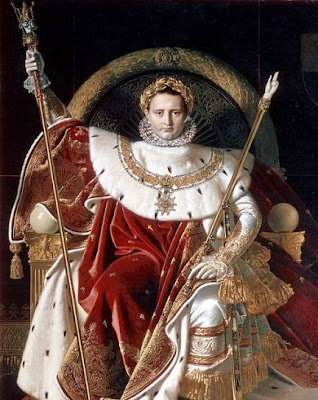
However, the excesses of Davis' undisputed reign over the franchise led the team into another deep void of talent. Davis was obviously a better coach than talent evaluator, but his desire to control every aspect of the team led to a situation where he answered to exactly no one. When a franchise is essentially run by one person, that franchise had better make sure the person in charge knows what he is doing.
Where have I heard this before?

CHAPTER THREE - 2005-2008
The Browns maddening lack of consistency on the field since their triumphant return in 1999 has been marked by constant turmoil from a leaderless front office, several coaching and system changes and an overwhelming rash of injuries and plain bad luck. All of these causes have both led to and resulted from a series of overwhelmingly bad drafts, starting with Dwight Clark and Butch Davis and ending with the Browns' most recent leader, Phil Savage.
A year ago it was almost impossible to find a Browns fan who did not support the work Phil Savage did in reshaping the team. Left with the damage of the Clark and Davis regimes, Savage had the unenviable task of essentially building a franchise from the ground up. Savage came to Cleveland with a plan and extensive experience as a scout and personnel evaluator in Baltimore, and after a sluggish start in 2005 and 2006, the team showed signs of being a contender in 2007. Entering 2008, the Browns appeared to be healthy and loaded with talent.
However, looking at Savage's drafts highlights some of the same mistakes that plagued Clark and Davis. Like Clark and Davis, Savage drafted from the "outside-in", ignoring key needs on the offensive and defensive lines, with the exception of picking Joe Thomas in 2007. The lines were neglected in favor of drafting several skill position players on offense and a wealth of linebackers and defensive backs, who all mostly struggled due to the fractured backbone of the team.
Savage's drafts also reflected a complete overhaul in the team's schemes, especially on defense. After Butch Davis loaded up the defense with pass rushing linemen and smaller, quicker linebackers, Savage reversed course as the team shifted to a 3-4 alignment. The need to add 3-4 talent rendered any capable Davis players obsolete, which further set the overall franchise's depth backwards. In addition, the offense became more committed to the run game, which necessitated finding new linemen. Also, Savage inherited a team with a glaring lack of skill position players, with the biggest hole being at quarterback.
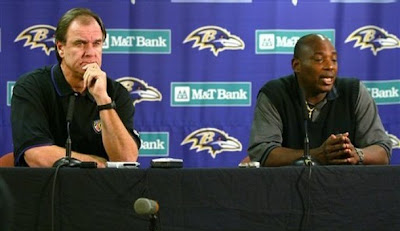
2005:
Braylon Edwards - WR
Brodney Pool - S
Charlie Frye - QB
Antonio Perkins - CB
David McMillian - LB
Nick Speegle - LB
Andrew Hoffman - DL
Jonathan Dunn - OL
2006:
Kamerion Wimbley - LB
D'Quell Jackson - LB
Travis Wilson - WR
Leon Williams - LB
Isaac Sowells - OL
Jerome Harrison - RB
DeMario Minter - CB
Lawrence Vickers - FB
Babatunde Oshinowo - DL
Justin Hamilton - DB
2007:
Joe Thomas - OL
Brady Quinn - QB
Eric Wright - CB
Brandon McDonald - CB
Melila Purcell - DL
Chase Pittman - DL
Syndric Steptoe - WR
2008:
Beau Bell - LB
Martin Rucker - TE
Ahtyba Rubin - DL
Paul Hubbard - WR
Alex Hall - LB
Savage's approach to rebuilding the Browns came in the form of identifying several key areas across the roster and slowly targeting these needs throughout the draft. Braylon Edwards, Brodney Pool, Kamerion Wimbley, Joe Thomas, Brady Quinn and Eric Wright were the results of Savage's initial plan. Looking at these six players (and factoring in the free agent signing of running back Jamal Lewis), Savage had astounding success, if only compared to Clark and Davis before him. However, in reality, Savage drafted very talented, but wildly inconsistent players.
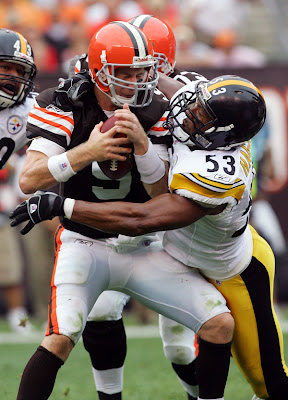
Volumes have been written about Braylon Edwards' inconsistency based on his 2008 play. After lighting up the scoreboard in a terrific 2007 season, Edwards suffered horrendous concentration lapses in 2008 and truly hurt the team in several games. Pool's play has been consistent at times, but very unremarkable. A concussion during his first preseason game seemed to slow Pool down and may have created some psychological effects in the process, making him tentative out of the gate.
Wimbley has been scrutinized by Reboot several times in the past As It Stands Now - Outside Linebacker, as he has not developed the NFL caliber skills required of a pass rushing OLB. His lack of development has really hurt the team, as a 3-4 defense that can't rush the passer is repeatedly victimized by strong passing games. As for the others, the jury is still out on Thomas, Quinn and Wright. Thomas is solid, if unspectacular, at left tackle, while Wright's confidence currently outweighs his skills. Finally, it's probably senseless to comment on Quinn, as he likely has played his last down in Cleveland.
As for the rest of the players taken in Savage's drafts, the results are pretty disappointing. With the exception of possibly Leon Williams, Jerome Harrison's potential and Brandon McDonald, Savage did not hit on any mid or late-round draft picks. Coming from a system in Baltimore that annually found late-round draft talent, Savage's failures here proved to be crippling to the Browns. Because Savage repeatedly struck out in the draft, he was forced to make major moves in free agency and via trades to fill roster holes. Besides an overpaid, ineffective roster, another consequence of these moves have depleted the Browns' 2009 picks.
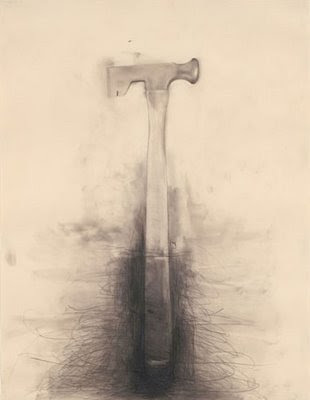
One of the ironies of Savage's tenure as Browns GM was his inability to fit players into the system established by the team. Considering his vast scouting background, Savage was probably the ideal person to run a team's draft in the NFL. However, his background with Baltimore and their brand of football never meshed with Romeo Crennel's New England model on the field. This clash of styles may have led to several misses, as Savage drafted in more idealistic terms, while Crennel had to actually get results out of the players. Not coincindentally, Crennel played very few rookies during his time as Browns coach.
Some examples of Savage's clash with Crennel can be found in the selections of McMillian, Speegle, Williams, Sowells, Wilson, Oshinowo, Purcell and Pittman. None of these players ever contributed in Cleveland, with the slight exception of Leon Williams. In the cases of McMillian and Speegle, these players couldn't make the transition to become an NFL outside linebacker. Crennel was never clear what position Sowells could play on the line, while Oshinowo, Purcell and Pittman were either too slow, too small or too weak to play a 3-4 end position. While the Braylon Edwards and Brady Quinn picks are the front page headlines of the Savage drafts, the choices of these three linemen are more representative of Savage's failure to improve the team. Purcell and Pittman were much too small to play along a 3-4 defensive line, yet Savage thought with time in the weight room, all could eventually contribute. He was proven wrong by Crennel's refusal to play them.
Obviously, hindsight does not favor those in the spotlight. If you view Savage's top draft picks and compare them to the alternatives available at the time, one's opinion can quickly sour. Although a weak draft in general, the Browns could have grabbed either DeMarcus Ware or Shawne Merriman much lower than Braylon Edwards at 3 in the 2005 draft. Also, the Charlie Frye pick could have easily been Ellis Hobbs. In 2006, Haloti Ngata would have been an upgrade over Kamerion Wimbley. And Savage could have better restored the team if he had held onto several draft picks, instead of trading for 2-year backup Brady Quinn and the miscast Corey Williams.
It's very difficult and probably unfair to predict how Savage's legacy will be viewed in the coming years. At the moment, Savage is a sort of monster to Browns fans, as he is the latest in a string of failures to have left the team in shambles. However, considering what Savage was given when he arrived in 2005, he did improve the team's talent. Looking at 2007 as the pinnacle of his success, the team was strong at several core positions and boasted some good, young talent. Even after 2008, there is still some quality remaining, which may be finally utilized under Eric Mangini.
However, with the dawning of the Mangini era in Cleveland, whatever remains of Savage's legacy will likely be destroyed. In little over a week, Mangini will likely unleash a series of trades that will rid the Browns of Savage era picks such as Braylon Edwards and Brady Quinn. The look of the franchise will rapidly begin to reflect Mangini's style, leaving Savage as yet another footnote in Browns history.
As for Browns fans, this is the beginning of yet another reboot.

Three Chapters that Analyzes the Browns' Recent Draft History in an Attempt to Answer the Question:
How did the Browns fall so far?
CHAPTER ONE - 1999-2000
It's fascinating how different things are in Berea entering the NFL Draft compared to a year ago. At this time in 2008, the Browns had just signed Donte Stallworth to huge free agent contract, traded for both Shaun Rogers and Corey Williams and added what appeared to be quality depth in Rex Hadnot. The team was only one Derek Anderson meltdown removed from clinching a playoff spot and the overall roster looked strong, featuring several playmakers across the board. In terms of leadership, the organization looked healthy and for the first time since the Browns returned in 1999, projected a sense of stability. GM Phil Savage had upgraded the roster and coach Romeo Crennel finally seemed to have turned the corner as a head coach.
A year later, the team is in a near state of chaos. A roster that seemed playoff worthy has been exposed, leaving a generous amount of holes. Donte Stallworth is looking at jail time, Shaun Rogers is dreaming of a salary cap-less NFL, Corey Williams and Rex Hadnot are expensive roster filler and young playmakers such as Anderson, Edwards and Quinn have likely played their last down in Cleveland. Gone are Savage and Crennel and in their place are Eric Mangini and George Kokonis, who have free reign to cleanse the team yet again.
Considering the Browns were a favorite to advance to the Super Bowl in 2008, the question has to be asked: In one year's time, how does an NFL franchise unravel so quickly?
In Cleveland's case, the question requires a more complex answer, which involves an ill-prepared rush back to the league in 1999, followed by a series of coaches and management who have all successfully put their individual stamps on the team, but have not acheived the stability of consistent franchises. Of course, nearly all of these false starts have occurred under the passive watch of Randy Lerner, who inherited the franchise from his late father. Lerner is neither a football guy or a hands-on owner, yet has refused to address these issues during his tenure. This lack of a true leader anywhere in the organization is the main contributor to the Browns' failure to build a winner.
However, despite all of the coaching and management changes the team has suffered in the past 10 years, one constant remains as vital to the Browns' downfall. The simple answer to how the Browns have spiraled into the depths of the league's worst teams is this:
Inept drafting.

The best, most consistent teams in the league are the ones who annually have solid drafts. Obviously, consistency at the top management and coaching positions adds to success, in the cases of Pittsburgh, Baltimore, Philadelphia, San Diego and numerous others. However, even the worst teams in the league get it right occasionally. Consider Miami and Atlanta in 2008. Both of these teams were pathetic in 2007, yet added strong leadership and made smart draft picks in order to elevate to the league's second tier, behind the perennial powers. Another example could be the Arizona Cardinals, who may have the worst personnel history of any team in the league outside of Cincinnati. The Cardinals managed a couple of strong drafts, which helped to build the team into a surprise championship contender.
The current crisis with the Browns now can be magnified by the number of players who could be considered "untouchable." Strong franchises can boast at least 6-7 top indispensable players. What about the Browns? Is there anyone on the current roster the Browns simply cannot afford to lose? The only names I can think of are Joe Thomas and Shaun Rogers, simply because of the positions they play.
Thomas' durability at left tackle is more valuable than his actual skills. Although Thomas is merely solid, finding a true, consistent NFL left tackle is very difficult. Replacing one is nearly impossible. As for Shaun Rogers, his value has to be measured in terms of the Browns defensive scheme, as in many ways, he is the ideal NFL nose tackle. Losing Rogers would absolutely collapse the already shaky defense.
As for the rest of the roster, where is the talent? Despite all the coaching and philosophy changes, how did the Browns not manage to accumulate any talent over the past 10 years? To truly analyze the Browns current situation, we have to look at the past and point to where it all started to unravel.

Epic Fail
I apologize in advance for using vulgar language, but in order to show how the Browns have fallen, one name has to be cited...
Dwight Clark.
The Drive, The Fumble, The Move, Spergon Wynn. All familiar phrases in the futile lore of Cleveland past. However, the Dwight Clark era has to be considered as the low point of the Browns existence.
Clark entered the 1999 draft with what appeared to be an endless array of picks, thanks to the expansion package given to the Browns upon their return. Using these picks, Clark selected the following players:
1-Tim Couch - QB
2-Kevin Johnson - WR
2-Rahim Abdullah - LB
3-Daylon McCutcheon - CB
4-Marquis Smith - S
4-Wali Rainer - ILB
5-Darren Chiaverini - WR
6-Marcus Spriggs - DL
6-Kendall Ogle - LB
6-James Dearth - TE
7-Madre Hill - RB
Also, the Browns traded picks to acquire QB Ty Detmer and FB Marc Edwards.
In 2000, Clark delivered this:
1-Courtney Brown - DE
2-Dennis Northcutt - WR
3-Travis Prentice - RB
3-JaJuan Dawson - WR
4-Lewis Sanders - CB
4-Aaron Shea - TE
5-Anthony Malbrough - CB
5-Lamar Chapman - CB
6-Spergon Wynn - QB
6-Brad Bedell - OL
7-Manuia Sevea - OL
7-Eric Chandler - DL
8-Rashidi Barnes - S
Looking at these drafts, which should be considered the most important in Browns history, one thing is glaringly obvious. Dwight Clark decided that the team did not need to build a core of linemen on either side of the ball. In fact, it took Clark a total of 21 draft picks over two years before he selected an offensive lineman. Notice how the Browns' offensive line has been a chronic weakness since. Also, the Browns defense has been one of the worst in the league at stopping the run for almost a decade.

Instead, the team wagered on building the team around a weak-armed quarterback from an average SEC team without adding any protection for him. It's a wonder that Couch lasted as long as he did in the NFL behind the likes of these non-existent linemen. 2000 saw the arrival of Courtney Brown, who turned out to be the most gentle 300 lb. football player in the history of the world. Obviously, if a team misses on consecutive first round picks, trouble will soon follow. However, in the Browns case, the situation grew dire thanks to Clark's inane choices and refusal to draft the interior players that make teams successful.
The only picks of the original 24 that could be considered solid would be Kevin Johnson, who did produce in Cleveland, Daylon McCutcheon, who was a fairly consistent corner and Dennis Northcutt, who was a very good punt returner. As for the rest of the players, none with the exception of Wali Rainer, Lewis Sanders and Brad Bedell lasted longer than 2-3 years in the league. Another telling sign of Clark's futility is that Northcutt is the lone player remaining in the NFL today.
The major flaw in Clark's plan could be considered the result of a strange combination of styles between management and the coaching staff. Clark and Carmen Policy came from the San Francisco system, which emphasized an efficient West Coast style of offense. However, head coach Chris Palmer worked under the Parcells family tree of coaches in the NFL, specifically with Tom Coughlin, whose offenses have always featured more traditional running attacks.
The blending of styles seemed to create confusion on draft days, as the players picked had a wide variety of backgrounds. Adding to the mess was a defensive philosophy that echoed the Parcells/Belichick defenses, which was a departure from the systems in place in San Francisco in the 80's and 90's. Needless to say, the drafts were almost schizophrenic in nature and failed to produce any type of working system in Cleveland.
The result was 5 wins combined in 1999 and 2000, leaving Browns management no choice but to change gears and hire a new coach. So, by the time the team entered the Butch Davis era in 2001, the original drafts have given the new coach absolutely nothing to work with. Obviously, Davis sensed that the leadership was inept, and quickly reduced Clark's role in the organization. The hope entering 2001 for Browns fans was that Davis would finally begin to build the core of a winning team, something that Dwight Clark epically failed to do.

CHAPTER TWO - 2001-2005
After the debacle of the Dwight Clark years, Browns management reached into the college depths and grabbed University of Miami head coach Butch Davis. Davis was coming off a successful college run and was groomed in the championship Dallas system run by Jimmy Johnson. Davis' pedigree, youth and attitude offered the Browns a fiery contrast to the mild-mannered Chris Palmer.
Davis wasted little time in shaping the Browns into the mold created by the Cowboys in the 1990's. Considering Davis had little to work with on the roster, any personnel changes were greatly anticipated. After sweeping out Dwight Clark and eventually Carmen Policy, Davis became the team's defacto GM, as well as its coach. The power structure in Cleveland clearly centered around Davis and any success incurred was exclusively the result of Davis' hand.

However, what followed was a mixed bag, as Davis clearly improved the team's talent level, culminating in a 2002 playoff appearance. But then Davis started to miss badly in the draft, which resulted in the team bottoming out in 2004, leaving the Browns once again searching for new leadership.
2001:
Gerard Warren - DL
Quincy Morgan - WR
James Jackson - RB
Anthony Henry - CB
Jeremiah Pharms - LB
Michael Jameson - DB
Paul Zukauskas - OL
Andre King - WR
2002:
William Green - RB
Andre Davis - WR
Melvin Fowler - OL
Kevin Bentley - LB
Ben Taylor - LB
Darnell Sanders - TE
Andra Davis - LB
Joaquin Gonzalez - OL
2003:
Jeff Faine - C
Chaun Thompson - LB
Chris Crocker - DB
Lee Suggs - RB
Ryan Pontbriand - LS
Michael Lehan - DB
Antonio Garay - DL
2004:
Kellen Winslow - TE
Sean Jones - DB
Luke McCown - QB
Amon Gordon - DL
Kirk Chambers - OL
Adimchinobe Echemandu - RB
East Coast Bias
Looking at Davis' drafts is interesting, as he certainly drafted some talent, but neither developed a solid roster core or brought the team any special, game-changing players. Davis' best quality as a coach was his brash approach with his players, as admittedly, Davis' teams always played hard for him. However, this intangible did not translate well in Davis' front office decisions, as he often refused to allow outside scouting to influence his decision-making. The greatest example of Davis' hubris has to be the drafting of Gerard Warren in 2001.
Reports have surfaced over the years that the Browns were ready to select Richard Seymour with their first round pick in 2001. Legend has it that Davis overruled Browns' management the night before the draft and insisted the team take Warren instead. The rest is history, as Seymour has been a vital part of a Patriots defense that has won three Super Bowls, while Warren has noisily bounced around the AFC.

After the Browns missed with Tim Couch and Courtney Brown (although at the time, the team did not fully realize this), the selection of Warren further sunk the franchise, as none of their three highest draft picks became impact players. Davis' second draft produced the mercurial William Green, who after a slow start to his rookie season, came on strong during the Browns' 2002 playoff push. Green was a physically tough runner who had some breakaway speed. Considering the Browns anemic offensive line in 2002, Green's production had fans hopeful that the team had finally found a star. However, Green's off the field troubles caught up to him, as a substance suspension and a domestic dispute (in which Green claimed to have fallen on a knife), essentially derailed his career.
Jeff Faine and Kellen Winslow followed in Davis' final years in Cleveland. Faine was a bit small, but his selection at least signaled that the Browns had finally realized that their offensive line needed a serious upgrade. Faine lasted a few years in Cleveland, before being traded upon the arrival of LeCharles Bentley. If anything, Faine has been a solid, if unspectacular pro. As for Winslow, Davis gave up a lot to get him, but didn't last long enough to see the results of his work. Winslow was injured early in 2004, which of course was the first of several injuries that have come to slow K2 down throughout his career.
As for the rest of Davis' drafts, on paper there are several players who have had productive NFL careers. Unfortunately, most of these players have not contributed in Cleveland. Anthony Henry has been consistent in Dallas, Andre Davis found a home with Houston, and Melvin Fowler, Kevin Bentley, Chris Crocker and Sean Jones have all been solid pros. As for the Browns, Andra Davis was a very good 5th round choice, as he started in Cleveland for 6 seasons, while Ryan Pontbriand is becoming a perennial Pro Bowl long-snapper.
Entering the NFL from college, Davis seemed to have an edge in the personnel department as he scouted several future NFL draft picks while at Miami. However, Davis showed a limited perspective when it came to drafting, as he mostly targeted ACC or East Coast college talent. Looking at his drafts, Davis reached for several ex-Miami players, including Jackson, King, Gonzalez and Winslow. All of his first round picks came from no farther West than Indiana and the pivotal 2002 draft seemed almost entirely centered on the ACC.
The other flaw in Davis' four Cleveland drafts was following in Dwight Clark's refusal to draft any offensive linemen. Davis' highest lineman pick came in 2003 with the selection of Faine. Considering the team's lack of quality linemen, which greatly affected both the running game and the health of franchise quarterback Tim Couch, this was inexcusable.
On the defensive side of the ball, only Warren and Amon Gordon were legitimate attempts at improvement. Davis somewhat continued the legacy left by Dwight Clark, as he attempted to mold the team in the image of 1990's Cowboys, complete with disruptive linemen flanked by fast linebackers. Like Clark before him, Davis attempted to draft all the "outside" players, as evidenced by the numerous linebackers and defensive backs selected. However, Davis refused to address the gaping needs along the D-line, which is very comparable to Clark's strategy of choosing skill position players over offensive linemen.

Another flaw in Davis' strategy was his poor judgment in terms of player character. While at Miami, Davis could get away with occasionally missing on a troublemaker or a project player, thanks to the vast roster depth at big-time college programs. However, in Cleveland, Davis' misses instantly affected the team and began to add up.
Warren was the first example of Davis' poor eye for character, as the rookie's propensity for talking about beheading quarterbacks and carrying unlicensed firearms got him into trouble with the league office. William Green's rough background was well-documented entering the league and manifested itself quickly. Quincy Morgan's ego preceded his hands and James Jackson was never happy about anything. Of course, Jeremiah Pharms was sentenced to a prison term before he could even put on a Browns uniform. Other players were drafted solely on unrealistic potential, such as Chaun Thompson, Lee Suggs and Luke McCown. In college, Davis could get away with these types of luxury picks. However, in Cleveland, these misses proved to be costly.
The epitaph of Butch Davis' Cleveland tenure seems to have changed over time. After witnessing yet another failed nation-building attempt by the team, this time at the hands of Phil Savage and Romeo Crennel, I've grown to look at Davis' reign in a kinder light. Yes, he did leave the roster and front office in a state of ruin upon leaving in 2004 and his drafts did not stabilize or give the team any real sense of identity. However, he did take the Browns to their only playoff appearance since returning in 1999 and after the misery of the Dwight Clark debacle, brought in at least some marginal NFL talent. Davis' teams were fast, energetic and generally fun to watch, at least on defense.

However, the excesses of Davis' undisputed reign over the franchise led the team into another deep void of talent. Davis was obviously a better coach than talent evaluator, but his desire to control every aspect of the team led to a situation where he answered to exactly no one. When a franchise is essentially run by one person, that franchise had better make sure the person in charge knows what he is doing.
Where have I heard this before?

CHAPTER THREE - 2005-2008
The Browns maddening lack of consistency on the field since their triumphant return in 1999 has been marked by constant turmoil from a leaderless front office, several coaching and system changes and an overwhelming rash of injuries and plain bad luck. All of these causes have both led to and resulted from a series of overwhelmingly bad drafts, starting with Dwight Clark and Butch Davis and ending with the Browns' most recent leader, Phil Savage.
A year ago it was almost impossible to find a Browns fan who did not support the work Phil Savage did in reshaping the team. Left with the damage of the Clark and Davis regimes, Savage had the unenviable task of essentially building a franchise from the ground up. Savage came to Cleveland with a plan and extensive experience as a scout and personnel evaluator in Baltimore, and after a sluggish start in 2005 and 2006, the team showed signs of being a contender in 2007. Entering 2008, the Browns appeared to be healthy and loaded with talent.
However, looking at Savage's drafts highlights some of the same mistakes that plagued Clark and Davis. Like Clark and Davis, Savage drafted from the "outside-in", ignoring key needs on the offensive and defensive lines, with the exception of picking Joe Thomas in 2007. The lines were neglected in favor of drafting several skill position players on offense and a wealth of linebackers and defensive backs, who all mostly struggled due to the fractured backbone of the team.
Savage's drafts also reflected a complete overhaul in the team's schemes, especially on defense. After Butch Davis loaded up the defense with pass rushing linemen and smaller, quicker linebackers, Savage reversed course as the team shifted to a 3-4 alignment. The need to add 3-4 talent rendered any capable Davis players obsolete, which further set the overall franchise's depth backwards. In addition, the offense became more committed to the run game, which necessitated finding new linemen. Also, Savage inherited a team with a glaring lack of skill position players, with the biggest hole being at quarterback.

2005:
Braylon Edwards - WR
Brodney Pool - S
Charlie Frye - QB
Antonio Perkins - CB
David McMillian - LB
Nick Speegle - LB
Andrew Hoffman - DL
Jonathan Dunn - OL
2006:
Kamerion Wimbley - LB
D'Quell Jackson - LB
Travis Wilson - WR
Leon Williams - LB
Isaac Sowells - OL
Jerome Harrison - RB
DeMario Minter - CB
Lawrence Vickers - FB
Babatunde Oshinowo - DL
Justin Hamilton - DB
2007:
Joe Thomas - OL
Brady Quinn - QB
Eric Wright - CB
Brandon McDonald - CB
Melila Purcell - DL
Chase Pittman - DL
Syndric Steptoe - WR
2008:
Beau Bell - LB
Martin Rucker - TE
Ahtyba Rubin - DL
Paul Hubbard - WR
Alex Hall - LB
Savage's approach to rebuilding the Browns came in the form of identifying several key areas across the roster and slowly targeting these needs throughout the draft. Braylon Edwards, Brodney Pool, Kamerion Wimbley, Joe Thomas, Brady Quinn and Eric Wright were the results of Savage's initial plan. Looking at these six players (and factoring in the free agent signing of running back Jamal Lewis), Savage had astounding success, if only compared to Clark and Davis before him. However, in reality, Savage drafted very talented, but wildly inconsistent players.

Volumes have been written about Braylon Edwards' inconsistency based on his 2008 play. After lighting up the scoreboard in a terrific 2007 season, Edwards suffered horrendous concentration lapses in 2008 and truly hurt the team in several games. Pool's play has been consistent at times, but very unremarkable. A concussion during his first preseason game seemed to slow Pool down and may have created some psychological effects in the process, making him tentative out of the gate.
Wimbley has been scrutinized by Reboot several times in the past As It Stands Now - Outside Linebacker, as he has not developed the NFL caliber skills required of a pass rushing OLB. His lack of development has really hurt the team, as a 3-4 defense that can't rush the passer is repeatedly victimized by strong passing games. As for the others, the jury is still out on Thomas, Quinn and Wright. Thomas is solid, if unspectacular, at left tackle, while Wright's confidence currently outweighs his skills. Finally, it's probably senseless to comment on Quinn, as he likely has played his last down in Cleveland.
As for the rest of the players taken in Savage's drafts, the results are pretty disappointing. With the exception of possibly Leon Williams, Jerome Harrison's potential and Brandon McDonald, Savage did not hit on any mid or late-round draft picks. Coming from a system in Baltimore that annually found late-round draft talent, Savage's failures here proved to be crippling to the Browns. Because Savage repeatedly struck out in the draft, he was forced to make major moves in free agency and via trades to fill roster holes. Besides an overpaid, ineffective roster, another consequence of these moves have depleted the Browns' 2009 picks.

One of the ironies of Savage's tenure as Browns GM was his inability to fit players into the system established by the team. Considering his vast scouting background, Savage was probably the ideal person to run a team's draft in the NFL. However, his background with Baltimore and their brand of football never meshed with Romeo Crennel's New England model on the field. This clash of styles may have led to several misses, as Savage drafted in more idealistic terms, while Crennel had to actually get results out of the players. Not coincindentally, Crennel played very few rookies during his time as Browns coach.
Some examples of Savage's clash with Crennel can be found in the selections of McMillian, Speegle, Williams, Sowells, Wilson, Oshinowo, Purcell and Pittman. None of these players ever contributed in Cleveland, with the slight exception of Leon Williams. In the cases of McMillian and Speegle, these players couldn't make the transition to become an NFL outside linebacker. Crennel was never clear what position Sowells could play on the line, while Oshinowo, Purcell and Pittman were either too slow, too small or too weak to play a 3-4 end position. While the Braylon Edwards and Brady Quinn picks are the front page headlines of the Savage drafts, the choices of these three linemen are more representative of Savage's failure to improve the team. Purcell and Pittman were much too small to play along a 3-4 defensive line, yet Savage thought with time in the weight room, all could eventually contribute. He was proven wrong by Crennel's refusal to play them.
Obviously, hindsight does not favor those in the spotlight. If you view Savage's top draft picks and compare them to the alternatives available at the time, one's opinion can quickly sour. Although a weak draft in general, the Browns could have grabbed either DeMarcus Ware or Shawne Merriman much lower than Braylon Edwards at 3 in the 2005 draft. Also, the Charlie Frye pick could have easily been Ellis Hobbs. In 2006, Haloti Ngata would have been an upgrade over Kamerion Wimbley. And Savage could have better restored the team if he had held onto several draft picks, instead of trading for 2-year backup Brady Quinn and the miscast Corey Williams.
It's very difficult and probably unfair to predict how Savage's legacy will be viewed in the coming years. At the moment, Savage is a sort of monster to Browns fans, as he is the latest in a string of failures to have left the team in shambles. However, considering what Savage was given when he arrived in 2005, he did improve the team's talent. Looking at 2007 as the pinnacle of his success, the team was strong at several core positions and boasted some good, young talent. Even after 2008, there is still some quality remaining, which may be finally utilized under Eric Mangini.
However, with the dawning of the Mangini era in Cleveland, whatever remains of Savage's legacy will likely be destroyed. In little over a week, Mangini will likely unleash a series of trades that will rid the Browns of Savage era picks such as Braylon Edwards and Brady Quinn. The look of the franchise will rapidly begin to reflect Mangini's style, leaving Savage as yet another footnote in Browns history.
As for Browns fans, this is the beginning of yet another reboot.
Posted by
Dave Kolonich
Apr 21, 2009 7:00 PM
- NBA Announces 2013-2014 Schedule
- Browns Ink Sharknado
- Sharknado A No-Show For Rookie Camp
- Trent Richardson Out Until Training Camp
- Browns Sign Brandon Jackson
- Carrasco Suspended Eight Games
- Browns Add to Wide Receiver Depth with David Nelson
- Browns Need to Learn from Past Draft Mistakes
- Browns Release Chris Gocong and Usama Young
- Browns Missing on Grimes Disappointing, But Not The End
The TCF Forums
- Jackets 2014
bac5665 (Tuesday, January 21 2014 11:55 PM) - Who is the worst owner in Cleveland Sports
mattvan1 (Tuesday, January 21 2014 10:05 PM) - 2015 Recruiting
furls (Tuesday, January 21 2014 7:43 PM) - Devone Bess
Spin (Tuesday, January 21 2014 5:35 PM) - 2014 Recruiting
jclvd_23 (Tuesday, January 21 2014 4:38 PM) - Official- Browns Coach Search/Rumors
googleeph2 (Tuesday, January 21 2014 3:42 PM) - Movies coming out
rebelwithoutaclue (Tuesday, January 21 2014 12:56 PM) - The 2014 Offseason Thread
Larvell Blanks (Tuesday, January 21 2014 12:25 PM) - Chris Grant's first 3 drafts
Kingpin74 (Tuesday, January 21 2014 10:13 AM) - Mike Brown
YahooFanChicago (Monday, January 20 2014 11:15 PM)



